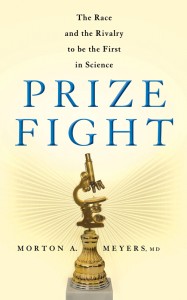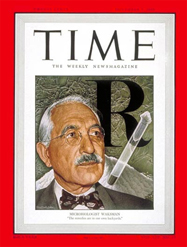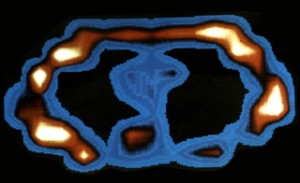Prize Fight: The Race and the Rivalry to be the First in Science

Book cover
In June, 2012, I published Prize Fight: The Race and the Rivalry to be the First in Science (Palgrave Macmillan) to unveil how scientific discovery really works. The paperback was issued in 2013.
Modern textbooks portray science as a set of current facts and strong beliefs, inscribed like the Ten Commandments by some distant authority. We often think of scientists as dispassionate and detached, nobly laboring without any expectation of reward. Nothing could be further from the truth. Scientific research is much more complicated and messy than this ideal. The joy of discovery, the exaltation of uncovering a law of nature, while a powerful motivation, is not enough. Leon Lederman, Nobel laureate, has targeted another major incentive: “Yes, Virginia, scientists do love recognition, but only since Pythagoras.”
Whose work earns the hallmark of priority for an original discovery of a scientific truth? Is it the researcher who first uncovers the potential of a new observation or finding? Or is it the one who contributes its meaningfulness in order to establish it as an advance? Or it is the one who develops and nurtures it to bring it to humanity’s benefit?
Prize Fight explores the fundamental factors in the drive to make breakthrough advances, as scientists are impelled to establish priority (“I found this first!”) and to stake a claim for credit. This is the drama underlying numerous conflicts in Nobel Prize awards.
Surprising to most, the scientific enterprise brims over with competition, battles, and injustices as well as the use and abuse of power and money. Conflicts may be resolved in an amicable fashion or they may ignite recriminations. Scientists are as subject to pride, greed, jealousy and ambition as the rest of us. Science is not only about triumphs – about not knowing and wanting badly to know – it is also about flawed and complicated human beings struggling for credit and recognition in their impassioned bid for immortality. Therein lies the human drama and even the tragedy – sometimes of Shakespearean proportions.
In Prize Fight, I pull back the curtain to reveal the hidden side of many scientific discoveries that profoundly impact our lives. Central to the narrative are two emblematic breakthroughs that earned the major researcher the Nobel Prize, yet with acrimonious conflicts over priority and credit. In one case, the bitterness and efforts at rehabilitation lasted 50 years and in the second, 30. Each story is marked by raw competitiveness and guile, with dramatic turning points. One involves the conflict between a senior researcher and his graduate student who was originally willing to forego fame, glory, and riches despite his senior authorship of landmark papers. The other concerns the competition between two senior researchers, and the scientific community’s marginalization of one of them.

Selman Waksman oversees Albert Schatz, one of his graduate students
Selman Waksman, an internationally renowned scientist at Rutgers University, began a screening program for antibiotics derived from soil microbes, literally from the ground he walked on. Albert Schatz, a young graduate student in Waksman’s laboratory, uncovered a new antibiotic, streptomycin, proved by clinical trials at the Mayo Clinic to be the first antibiotic effective against tuberculosis. The discovery was hailed as a major life-saving advance. This wonder drug, along with penicillin, opened the antibiotic era. Schatz was the senior author of the reports and shared the patent with Waksman who nevertheless undertook a series of stratagems to marginalize Schatz. In an increasingly bitter exchange of letters, Waksman viewed Schatz as “my hands, my tools” as well as “a cog in a wheel” of his own fundamental research. Schatz tried to counter this as well as Waksman’s threats to his career with his own ruses. The only thing that mattered to him was ownership of his work. He wanted recognition for his research.

Selman Waksman was featured on the Time magazine cover in November 1949. Three years later, he was awarded the Nobel Prize.
In an unprecedented move that thoroughly rocked the scientific community, Schatz, feeling betrayed, sued Waksman and Rutgers and won a favorable out-of-court settlement. The case received wide publicity. Nevertheless, Waksman was featured on the cover of Time magazine and in 1952 received the Nobel Prize. Albert Schatz was essentially blackballed as the scientific community closed ranks against a whistle-blower, and he could never again find an academic position. He fled with his family to Chile where he found a scientific job with the government for a few years before returning to the United States. For the next fifty years, he was obsessed with a desperate quest to validate his discovery and receive proper credit.
The second narrative involves my colleague, Paul Lauterbur, a physical chemist at the State University of New York at Stony Brook. Lauterbur had an epiphany, a “flash of genius” that transformed a basic technique used by chemists and physicists, nuclear magnetic resonance (NMR), into a clinical diagnostic method new employed worldwide – magnetic resonance imaging (MRI). MRI has become a household word. Today it is a billion-dollar industry with more than 60 million medical diagnostic scans performed worldwide each year. Who has not had an MRI study or known someone who has? Lauterbur was awarded the Nobel Prize in 2003.

Raymond Damadian and his two post-doctoral fellows standing by their homemade MRI machine, dubbed “Indomitable”
These facts alone do not suggest the underlying fiery dispute that raged for thirty years around the development of the MRI. Raymond Damadian, a physician-researcher at the SUNY Downstate Medical Center in Brooklyn, had published the seminal paper that first directed the attention of chemists to the vast medical potentials of NMR. Lauterbur cited this report in his grant applications for funding, but chose not to cite it in his first paper introducing the procedure’s imaging capability to the scientific community. Damadian became convinced that Lauterbur was exploiting his work. A bold and energetic individual, he spent a feverish year in a Herculean task to construct by hand the first MRI machine capable of imaging a human body. But at a press conference he called to announce the achievement, he made misstatements that cast him in an unfavorable light. He left academia, set up a commercial company to manufacture the units for clinical use and in time, won millions of dollars from GE and other vendors for violation of his patents.
When the Nobel Prize was awarded to Lauterbur without crediting Damadian, he did not suffer silently. He took out full-page ads in major newspapers boldly proclaiming “THIS SHAMEFUL WRONG MUST BE RIGHTED!” In the long history of the Nobel Prizes, such an action was unprecedented. Many felt that Damadian might have had a legitimate claim but decried his aggressively bombastic approach.
Exploring cases closely guarded by the scientific community, from allegations of stolen authorship to lifelong struggles to gain recognition, I show how too often brilliant minds are reduced to bitter conflicts and promising careers are cut short by disputes over authorship or fudged data.
I make recommendations by which the scientific community can better resolve conflicts over the attribution of credit so that the paralyzing disputes that often interrupt the pursuit of scientific progress may be avoided.
It benefits us greatly to understand the true dynamics of the discovery process and the attribution of credit for many reasons: Because priority is cherished as a universal right deserving of proper recognition. Because we are affected so directly by scientific advances. Because we need to be sound in our judgment of the allocation of funding and resources. And because profound benefits and consequences to society may be at stake.

